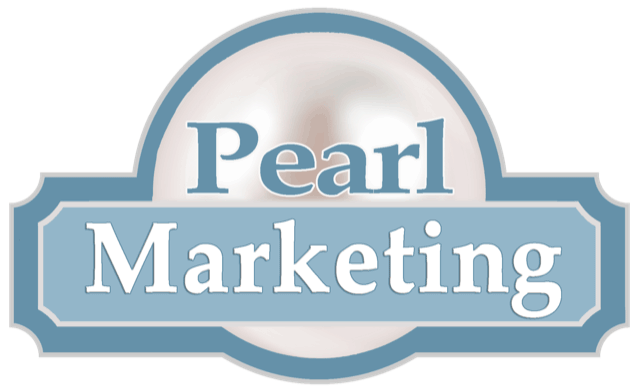If you are aiming to position your business at the top of the search engine results page or increase lead traffic to your site, look no further! In this post we will go beyond the SEO basics and dive into the top ranking factors to boost search engine rankings and develop the most effective strategies to enhance website traffic.
First let’s review: What exactly is SEO, and how does it determine online search visibility? SEO is the abbreviation for search engine optimization which outlines a set of practices designed to improve the quality and quantity of lead traffic to your website and relevant pages.
Here’s how to Rank on Google:
- Step up your domain game – readability and rich keywords
- Do not over optimize (URLs, headings, internal links, etc.)
- Internal and external links
- Mobile friendliness
- Site architecture
- Add Alt Text to Images
- Keep content relevant
- Write a great meta description
- Choosing the right keywords
- Conduct a SEO competitor analysis
- Focus on search intent v.s. search volume
- URL redirects – Let’s get technical!
- Optimize old content
- Page loading times
- Compress Images
1. Step up your domain game – Keep it short and memorable
Domain names are unique, customizable internet addresses of websites. Domains which are short and easy to remember are valuable when it comes to maximizing search engine-referred traffic. Therefore, it is best to refrain from creating “keyword-rich” or “keyword-targeted” domains as your website could be associated with low quality content.
Another thing to keep in mind:
Avoid any excess hyphens if possible! It is very common when creating a domain to separate a couple words using the symbol for readability. However, an excess amount can strongly correlate with spammy behavior and become difficult for the consumer to remember.
2. Do Not Over Optimize (URLs, headings, internal links, etc.)
You can never have too much of a good thing right? Well, in the case of SEO, you actually can have just a bit too much! Over optimization relates to a lack of diversification in your SEO elements. Keyword stuffing, using the same tag title for internal and external links, or link spamming are all specific examples of over-optimization.
Internal linking is encouraged, however it is best to avoid keyword-rich anchor text. Anchors that use the exact URL in a repetitive manner may result negatively in search engine rankings. This will also create a red flag for Google and those visiting your website.
For example, if your target keyword is “best-practices-for-SEO” over optimization may appear as the following:
- URL: https://best-practices-for-SEO……..
- H1 Tag: “best practices for SEO”
- Overused keyword on page: “best practices for SEO”
3. Internal and External Links
External linking can assist search engines in determining the usefulness and quality of your website. Initially, the link is external to the host domain. An external link will point to a target page on another website.
Internal links help to connect one page to another, all on the same domain. They can help a user navigate a site in terms of relevant information. For example, if you were to publish a blog on the importance of CRM integration, chances are you would prefer that blog to connect to another page on your website, offering a free trial of your own CRM platform.
4. Mobile Friendliness
Over the years, mobile friendliness has grown as a necessity when building various applications and web pages. In fact, many SEO experts claim that a large percentage of searches stem from a mobile device. To provide the best user experience, pages need to be optimized to automatically resize to various screen dimensions.
5. Site Architecture
Set up an SEO friendly website architecture! It is important to optimize your website for user friendliness and Google. A site’s architecture is founded upon how a website’s pages are structured and linked together. If you have several pages on your site that are not linked to the homepage, or any other page, it will present a challenge to Google to find that content. However, if your site is interlinked, Google will be easily able to index those pages!
6. Add Alt Text to Images
What is alt text? Alt text is the written description that appears in place of an image if that image fails to load on a user’s screen. Alt text also helps to translate the context of an image to visually impaired readers.
How does Alt Text affect SEO? Incorporating an image description helps Google understand the subject matter and content of a webpage. This can also increase the likelihood of your image appearing in search results!
7. Keep Content Relevant
The freshness of your content lays down the foundation for the entire SEO experience. Your end goal: to continually deliver the most relevant content to the user.
In reality SEO ranking goes beyond content itself and relies upon many factors. These factors could include how often you create pages on your site, how often content is updated, and the rate of new link growth (link building.)
8. Write A Great Meta Description
What is a meta description? A meta description is a snippet of information describing what a webpage will be about. A well written description helps Google to comprehend your page’s content which provides an easier chance to rank high on search engines.
Here are a couple points to keep in mind when constructing a solid meta description:
- Keep the description concise
- Your meta description doesn’t need to be lengthy, rather it should provide the reader with a quick glimpse of a solution to their question. Provide a quick summary of your page, or point out statistics and points that will keep readers engaged.
- Provide a solution
- As mentioned above, your meta description should provide a solution to the challenge readers are looking to solve. Let’s create a meta description which answers the query: “How to increase engagement on social media.”
- A good description would be: “Know your audience. Share valuable content. Interact with followers. Increase engagement on social media with this 10-step checklist! “
- As mentioned above, your meta description should provide a solution to the challenge readers are looking to solve. Let’s create a meta description which answers the query: “How to increase engagement on social media.”
9. Choosing the Right Keywords
There has to be one golden keyword to place my site at the top of Google’s search engine…. right? Instead of ranking for a single keyword, devote some time to creating a keyword theme. Searching for multiple keywords related to a single idea will help more qualified search engines to boost your content. Create a list of keywords with greater specificity and have enough search volume to justify targeting.
10. SEO competitor analysis
What is SEO competitor analysis? SEO competitor analysis is the process of identifying strengths and weaknesses of you and your competitor’s SEO. Running an analysis also allows you to review your overall market and monitor current performance to ensure ranking.
11. Focus on Search Intent v.s. Search Volume
Create content that aligns with search intent! Search intent is the intention behind a search query. Is the user looking to make a purchase or inquire information about a certain subject? That’s where search intent comes in! Here’s where it all comes to play in SEO: if you want to rank on Google, you need to provide relevant information in response to a query. For example, if a user were to inquire “the best laptops for graphic design,” they would most likely follow up with a search result that provides a deep analysis on the subject, with reviews, statistics, and device comparisons.
12. URL Redirects – Let’s Get Technical!
What exactly is a redirect? A redirect helps to send users to a different URL from the one they originally requested. URL redirects forward authority of any links pointing to a page which has been moved or deleted. For example, a 301 code signals a permanent redirect that passes full link equity to the correct server.
Taking the time to learn which situation requires a specific status code is fundamental to optimizing web pages properly.
13. Optimize Old Content
Out with the old, in with the new…(sort of!)
If you published an excellent blog post that generated a substantial amount of traffic in the past, chances are, you would like to reuse that information months later. Updating existing content will help you enhance ranking on Google’s search engine and provide valuable information that still resonates in the present. Here are a few steps to provide new life to old content:
- Time For New Keywords
- Keywords which provided traffic in the past might not hold up to their potential in the present. Research relevant keywords to boost content SEO!
- Add New Information
- Educate your audience on the latest trends, tactics, and techniques, in a specified industry!
- Include Updated Audio/Visual Content
- Crisp images, videos, and podcasts are all excellent ways to add variety to an article or blog.
14. Page Loading Times
A website’s page loading time is the amount of time it takes for a user to be directed to your site after that initial click! The faster page can load, the better performance it holds across a range of marketing and SEO metrics. In fact, Google indicates that website speed is one factor used by its algorithm to rank pages. Here are a few recommendations to improve web page optimization and loading times:
- Optimize images and videos to accommodate storage space.
- Reduce the amount of page redirects it takes to get to a solution.
- Use a CDN (Content Distribution Network) to distribute the load of delivering content.
15. Compress Images
It is important to optimize images for SEO! Image optimization helps to deliver high-quality images in the ideal format, size, and resolution, without an increased page loading time. In return, web sized images will take up less storage space on your server, resulting in quicker site backups. It also involves attaching information via metadata so search engines can interpret page content.






















